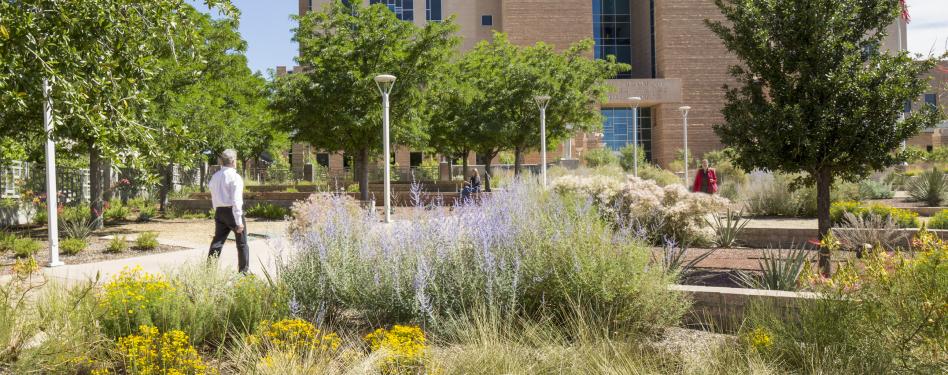
Feature image: The SITES-certified Peter V. Domenici U.S. Courthouse in Albuquerque, New Mexico. Photo by Robert Reck.
This article was originally posted on July 25, 2023, on USGBC+ as "GSA uses SITES to nurture the landscape and manage stormwater.” Read the full article.
“Throughout human history, we’ve seen biodiversity as an infinite asset and treated it that way,” notes Brandon Hartz, senior landscape architect for the U.S. General Services Administration (GSA).
GSA has a long history of implementing sustainability strategies at scale. “GSA has a big opportunity to support biodiversity,” Hartz nodded. “Not just [by] checking a box, but [by] embedding it into our whole process.”
As an agency of the U.S. government, GSA was founded to help manage and support federal property and provide contracting options. Its mission is to deliver effective and efficient government services for the American people.
The resulting footprint is vast. GSA oversees 8,500 owned and leased spaces covering 150,000 acres nationwide, including office space for 1.1 million government employees. With a built-to-own model, in which GSA plans to operate and maintain facilities for their entire life cycle, prioritizing long-term efficiency led to the early adoption of sustainability strategies.
One of these core strategies was the use of third-party certifications, such as LEED, to ensure the highest efficiency for GSA-managed buildings. In 1999, GSA became the first government agency to adopt LEED certification, and it now requires LEED Gold certification for federally owned new construction and substantial renovations. The agency became a USGBC Platinum member in 2001. In 2007, the Energy Independence and Security Act (EISA) decreed more ambitious requirements for stormwater management, laying the groundwork for GSA to require the SITES rating system at the Silver level for its capital construction program in 2016.
Complementary to LEED, SITES certification promotes sustainable and resilient landscape development and can be used on sites with or without buildings to foster biodiversity, implement green infrastructure strategies and improve resilience.
“Using SITES gives us project accountability and, frankly, raises the bar on our quality of work,” explains Hartz, who is also a SITES Accredited Professional (SITES AP). “It makes the difference between talking the talk and walking the walk for our sustainability work.”
